This Tile Is the Most Durable — and Beautiful — Choice for Your Home
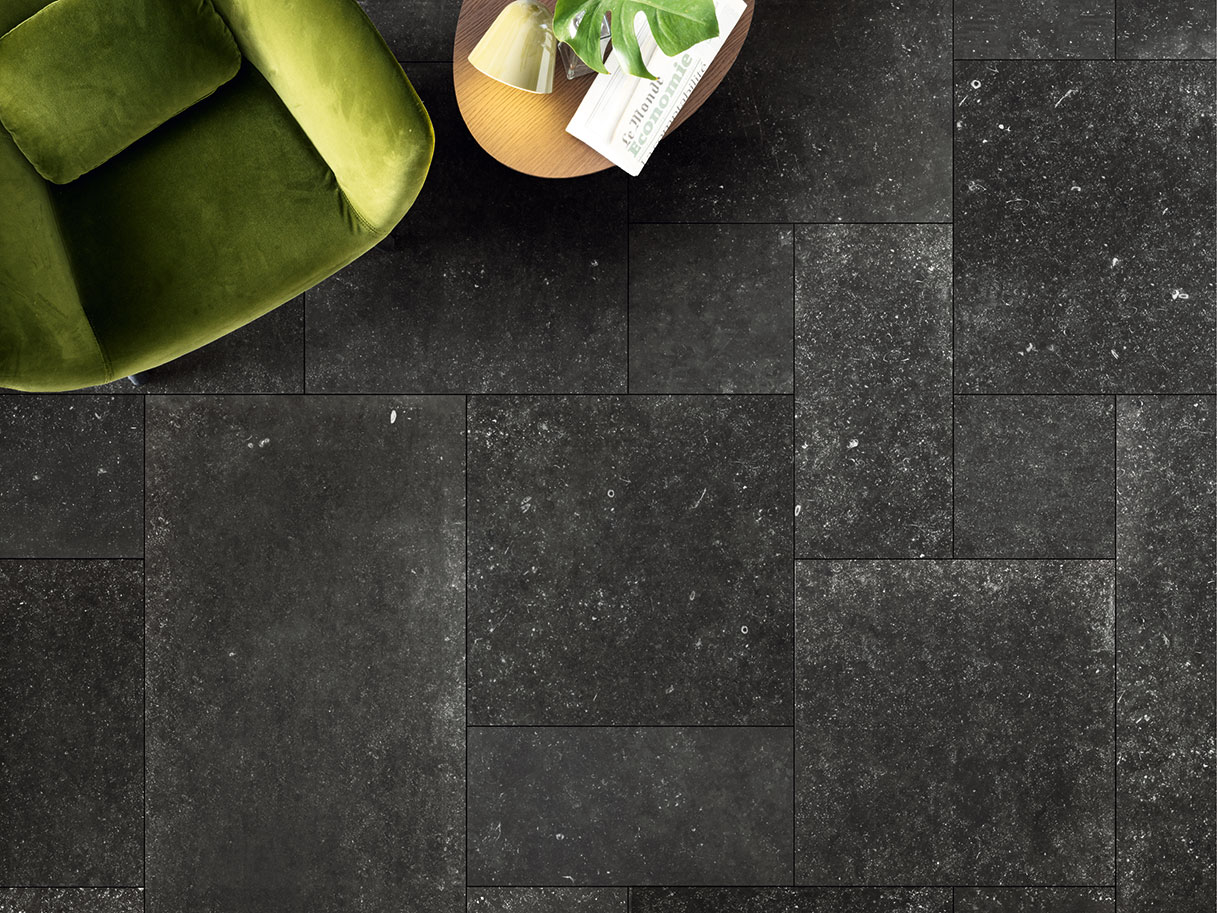
Here’s a close-up of various sizes of Belgica porcelain tiles that are used to create an unusual pattern underfoot.
Stone and stone-look porcelain tiles promise durability underfoot
The Carefree House examines attractive home products that are also durable and easy to maintain. Stone and stone-look porcelain floor tiles go under the microscope here in a conversation with Valerie Hutchinson of Garden State Tile.
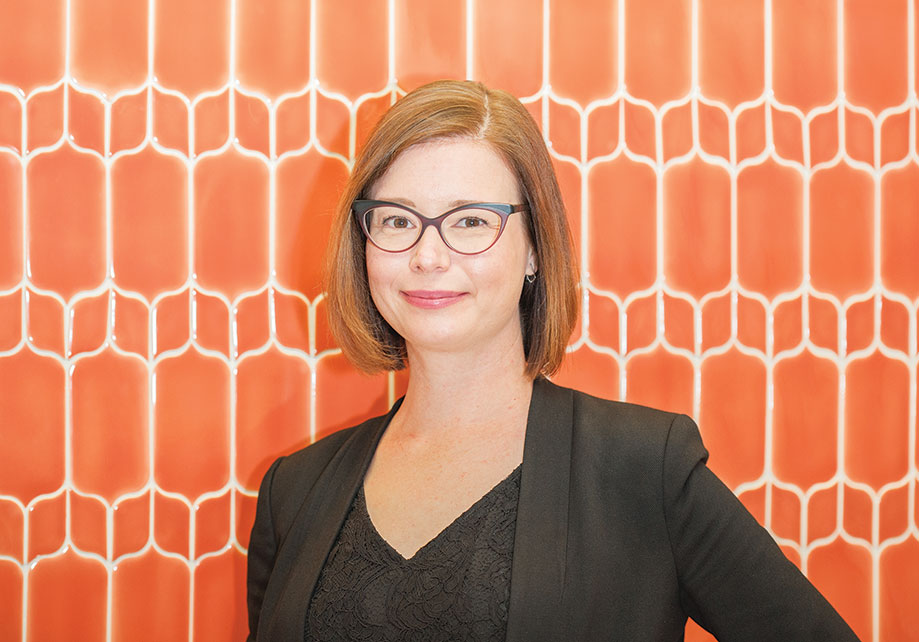
Valerie Hutchinson, NE Residential Showroom Sales Manager at Garden State Tile of Princeton. GSTile.com
Design NJ: What are the most durable and easy-care options for floor tiles?
Valerie Hutchinson: Natural stone has been used for hundreds, even thousands, of years on floors — granite, slate, marble, travertine. They’re all durable, but they’re also porous and can require special setting materials, sealers and maintenance. And natural stone changes over time. It gets a patina and changes color. Even granite will change unless it’s kept sealed.
Today many designers and homeowners go with stone looks in porcelain, which is very dense and not porous. Today’s high-quality porcelain tiles have amazing stone graphics. With cutting-edge digital technology and manufacturing, the porcelain tiles offer the same beauty of marble, slate, travertine, onyx, Belgian bluestone, quartz and quartzite without special upkeep. They are heat- and stain-resistant. They’re also frost-resistant so they can be used outside. And porcelain is UV-stable [unaffected by the sun’s ultraviolet rays], so it can be used on a patio, in a brightly lit atrium and near windows without fading or discoloring.
In addition, porcelain tile is often less expensive than natural stone, especially when adding in installation costs, sealers and cleaners. Porcelain comes in many quality and durability levels. Even in residential spaces, a commercial-rated porcelain is ideal for the best durability and slip-resistance.
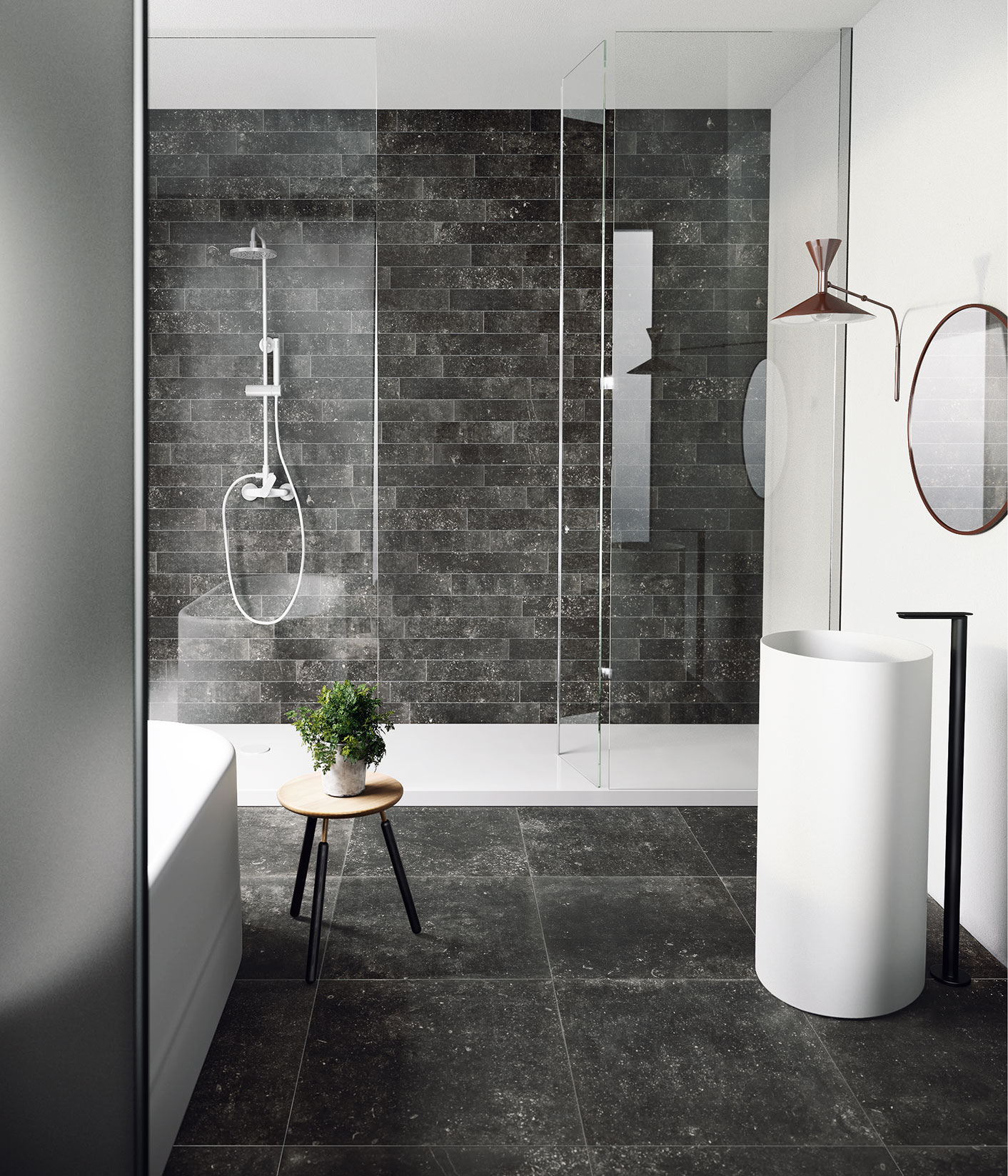
Belgica porcelain tile delivers the appearance of natural basalt stone tile underfoot (as well as on the walls). Larger floor tiles are very popular because they make rooms seem bigger and offer a luxurious appearance.
DNJ: How often is sealing required and how can a homeowner tell when it’s time to reseal?
Hutchinson: Most porcelain tile never needs sealing. Natural stone should be sealed with a high-quality penetrating sealer, not a topical sealer, before and after grouting. Then, depending on how much abuse the floor takes, the stone will need to be resealed every year or every few years.
With light-colored stone, you can put some water on it in a well-lit area and let it sit for about 10 minutes. If there’s a color change — if white stone appears gray, for instance — it needs resealing. But you can’t tell with dark stone. It’s not an exact science to know when resealing will be needed, so it’s best just to put it on your calendar to do with spring cleaning every year.
DNJ: What is a good brand for a sealer and where is it sold?
Hutchinson: Fila® and Miracle®, sold at a reputable stone or tile showroom, are my favorites. These don’t change the appearance of the stone.
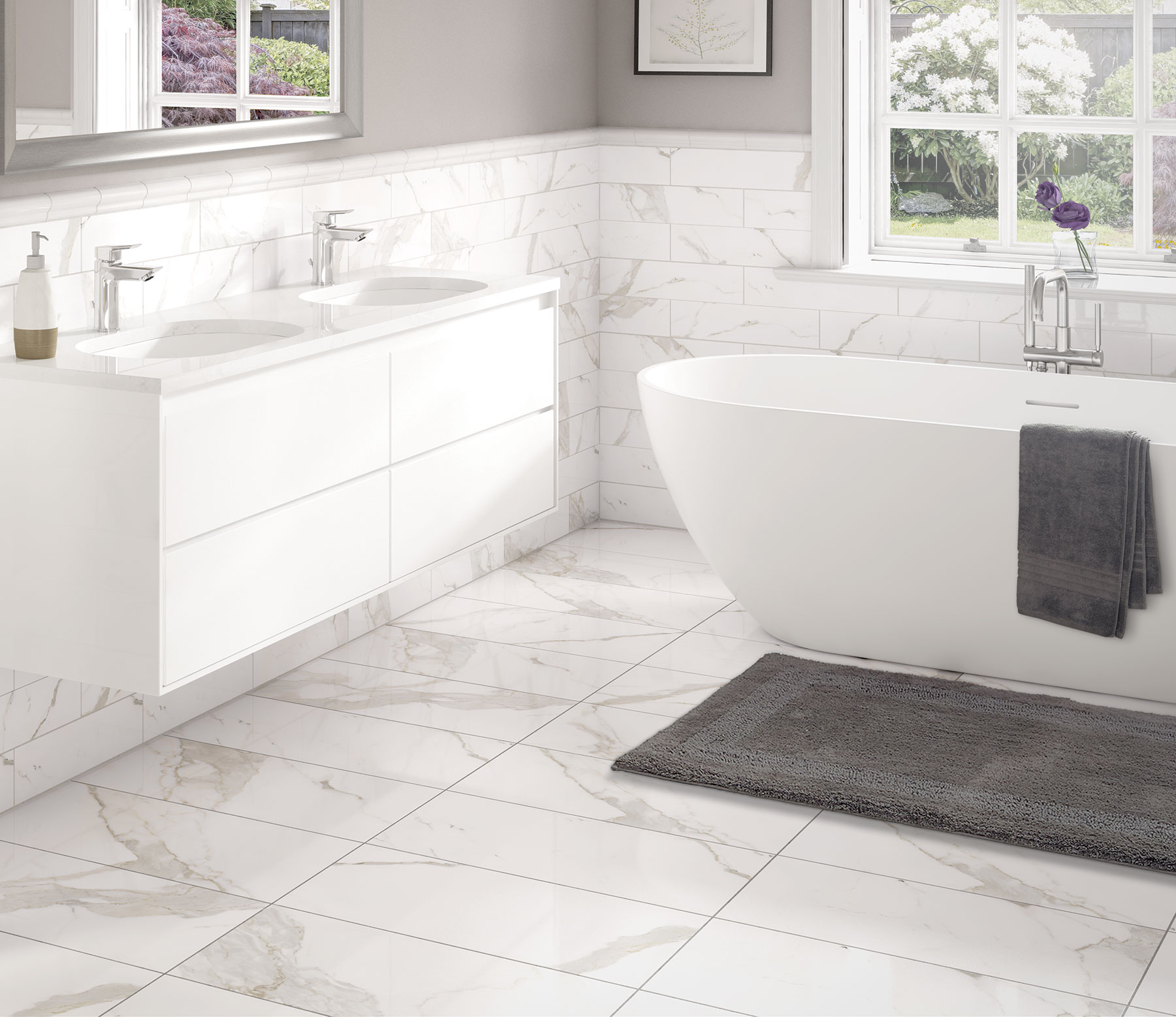
Does that master bathroom have a marble floor? No, it’s Portico Calacatta, a 12×24-inch porcelain tile that’s an easy-care alternative to natural marble.
DNJ: Are there particular cleaning products that should and should not be used?
Hutchinson: For porcelain, almost any cleaner can easily be used. For natural stone, you should avoid anything containing acid or ammonia, including natural cleaners such as vinegar and lemon juice as well as most kitchen and bathroom cleaners. We recommend stone-safe cleaners sold under the Fila and Miracle brands.
DNJ: Stone and stone-look floor tiles are often heavily textured, which can make cleaning tricky. Any advice?
Hutchinson: Anything with texture is going to be more difficult to clean. High-quality porcelains have amazing pattern depth that looks like fissures, divots, fossils, veins and clefting but without the cleaning challenges. Look for something smooth, whether matte or shiny, and it’ll be easier to clean.
DNJ: Designers are using ever-larger floor tiles, partly because the installation results in fewer lines —and having fewer lines makes spaces seem larger. Does size affect durability and maintenance?
Hutchinson: Our designers love using large formats because there’s less grout to clean. The most popular sizes are 12×24, 18×36 and 24×48 inches, although we go 24×48 inches and even larger on floors. Durability is the same, but the larger pieces have less breakup of the pattern. The big tile looks richer. It’s a high-end, luxury look. Large-format tiles are easier to clean because there are fewer joints. Large format is just as durable as smaller tiles as long as it’s installed correctly.
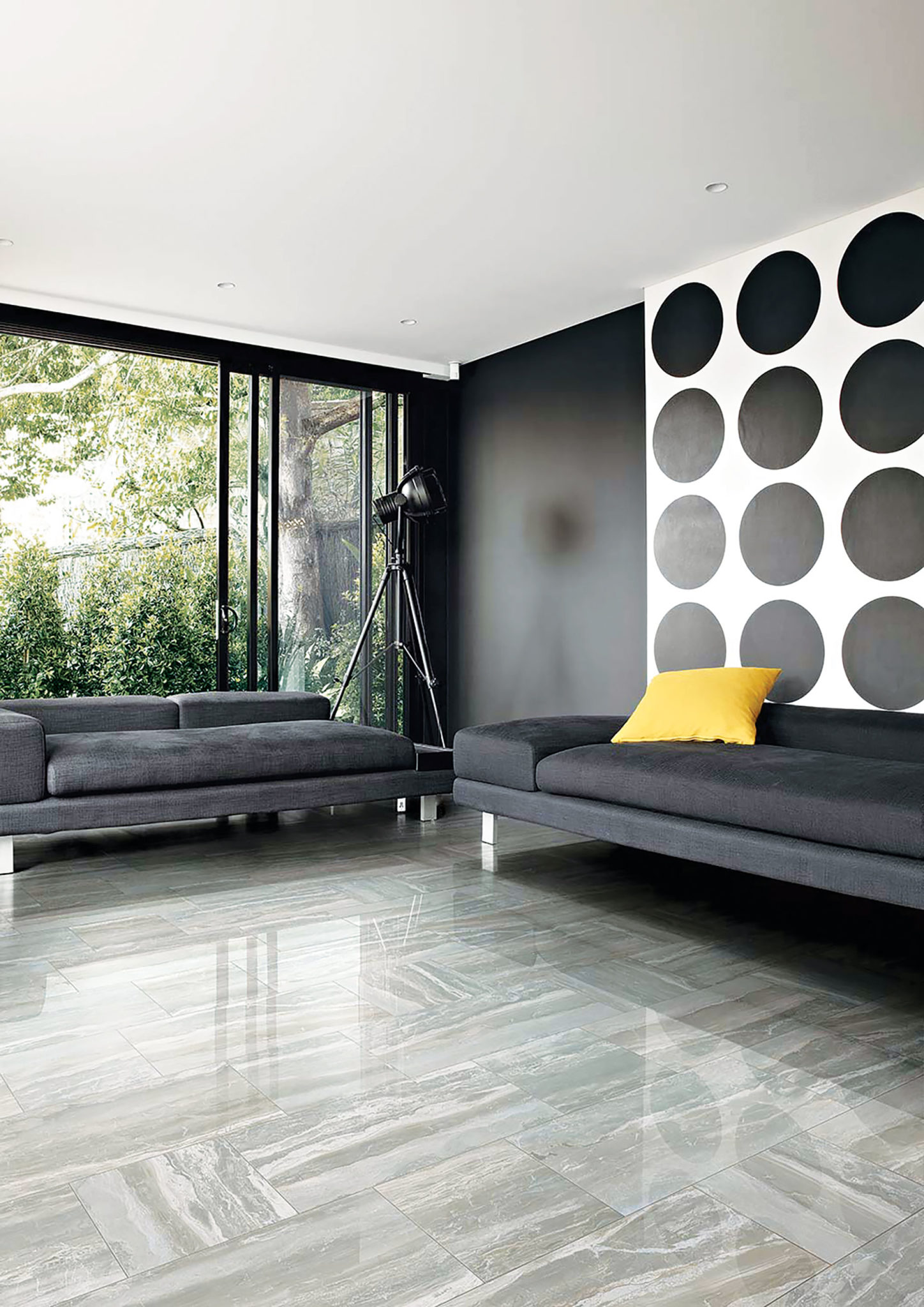
With the luminous look of onyx, 12×24-inch porcelain tiles bring subtle glam to this room. Shown is Americana Onyx tile in Silver.
DNJ: Are there any color or design choices you recommend for long-term satisfaction?
Hutchinson: Whites, grays and taupes reign supreme in today’s design choices, and they’re timeless. People are warming them up by mixing natural woods and plants into their rooms for contrast and layering.
DNJ: If a consumer wants an easy-care choice, what advice would you give?
Hutchinson: The highest-maintenance tiles will be anything porous, such as natural stone, so other choices would be better in that case.
DNJ: Are there other factors affecting stone and stone-look flooring choices?
Hutchinson: Know what the materials are made of, where they originate and what kind of long-term environmental impact they have. Porcelain tiles are among the most durable and sustainable building materials. They’re a green design choice because of resource conservation as opposed to vinyls, plastics and epoxies. One of the newest and exciting innovations in tile are huge porcelain slabs at nearly 64×128 inches. These are great for flooring, but also amazing for super-durable coordinating countertops. I encourage homeowners to ask lots of questions. Garden State Tile’s staff has vast knowledge and can help.
Mary Vinnedge, Design NJ’s first editor in chief, now writes from her home on the Texas gulf coast.
